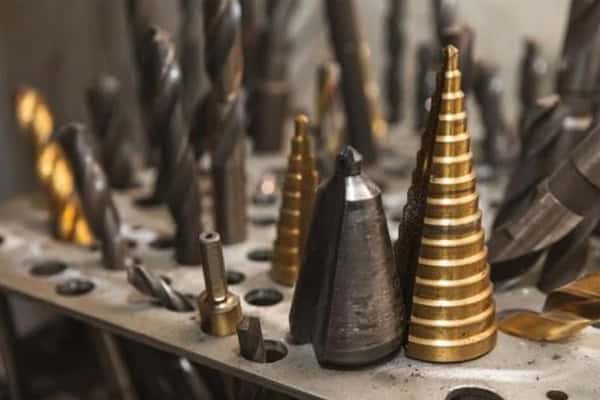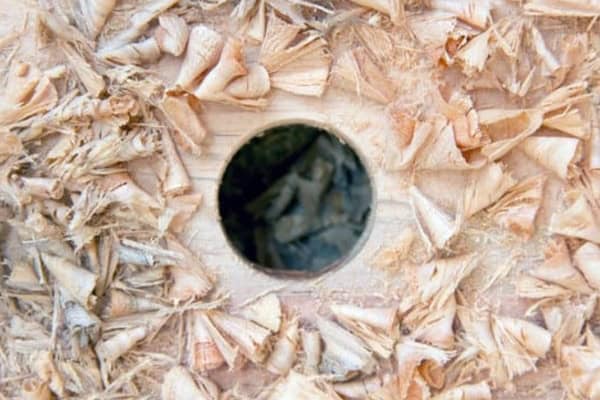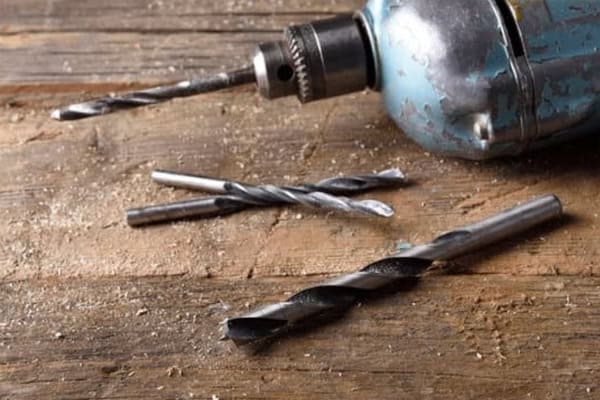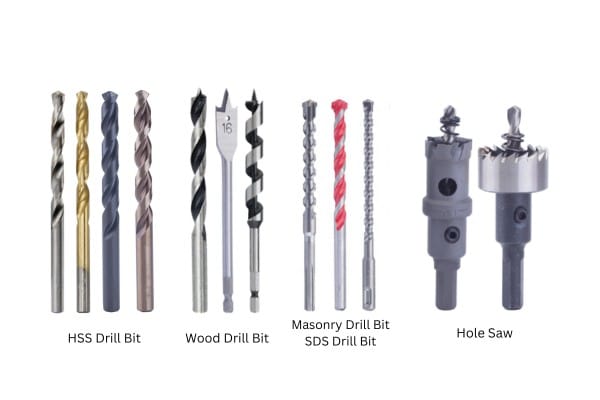
Ever tried drilling a hole bigger than your drill bit? It might sound tricky, but with the right techniques, it’s totally doable. Let me walk you through how you can achieve this without breaking a sweat.
Drilling a hole larger than your drill bit is possible by using tools like step drills or by starting with a smaller pilot hole and then using a larger bit to expand it. These methods ensure accuracy and control without relying on drill speed.
Let’s dive into the essentials you need to know.
What Methods Can You Use to Expand a Drilled Hole?
Understanding the different techniques to enlarge a hole is crucial for achieving the desired size efficiently.
You can expand a drilled hole by using step drills or by first drilling a pilot hole with a smaller bit and then using a larger bit to widen it. These methods help maintain precision and prevent material damage.

When it comes to expanding holes, choosing the right method makes all the difference. Whether you prefer step drills for their versatility or the traditional pilot hole approach, each technique has its benefits depending on the project.
Using Step Drills
Step drills are specially designed bits that allow you to drill multiple hole sizes1 without changing bits. They are great for creating clean, precise enlargements.
Advantages of Step Drills
- Versatility: One bit can create various hole sizes.
- Efficiency: Saves time by eliminating the need to switch bits.
- Clean Edges: Provides smooth and accurate hole enlargements.
Drilling a Pilot Hole First
Starting with a smaller pilot hole makes it easier to guide the larger bit, ensuring a straight and accurate enlargement.
Steps to Drill a Pilot Hole
- Mark the Spot: Clearly indicate where you want the hole.
- Choose a Smaller Bit: Select a bit slightly smaller than your desired final size.
- Drill the Pilot Hole: Carefully drill the initial hole to guide the larger bit.
- Enlarge the Hole: Switch to a larger bit and drill slowly to expand the hole to the desired size.
Common Tools for Expanding Holes
Besides step drills and pilot holes, there are other tools that can help you achieve larger holes with ease.
Scies cloches
Hole saws are perfect for cutting larger, circular holes in various materials like wood, metal, and plastic.
Reamers
Reamers are used to smooth and enlarge existing holes, providing a precise finish.
Table: Tools for Enlarging Holes
| Tool | Best For | Avantages |
|---|---|---|
| Step Drill | Multiple hole sizes | Versatile, efficient, clean edges |
| Scie cloche | Large circular holes | Precise, suitable for various materials |
| Fraise | Smoothing and enlarging holes | Provides a clean finish |
| Pilot Hole & Larger Bit | Controlled enlargement | Ensures accuracy and prevents material damage |
By understanding and utilizing these methods, you can confidently enlarge holes to the size you need without hassle.
What Size Drill Bit Should I Use for a 5/8" Hole?
Choosing the correct drill bit size for a 5/8" hole ensures accuracy and efficiency in your project.
For a 5/8" hole, it’s best to use a step drill or start with a smaller pilot hole, such as 9/16", to allow for precise enlargement and control.

When planning to drill a 5/8" hole, selecting the right initial size is key. Starting with a slightly smaller bit, like 9/16", provides a foundation that can be carefully expanded to reach the desired 5/8" diameter. This method minimizes the risk of cracking the material and ensures a smoother finish.
Step-by-Step Guide
- Mark the Spot: Clearly mark where you want the hole to be.
- Start with a Smaller Bit: Begin drilling with a 9/16" bit to create a pilot hole.
- Use a Step Drill or Larger Bit: Gradually enlarge the hole to 5/8" using a step drill or a larger bit, drilling slowly to maintain control.
- Check Alignment: Ensure the hole remains straight and aligned throughout the process.
- Finish the Hole: Smooth out any rough edges with sandpaper or a deburring tool.
Why Not Drill Directly?
Drilling directly with a 5/8" bit can be challenging, especially in harder materials2. Starting smaller reduces stress on the bit and material, resulting in a cleaner, more accurate hole.
Common Mistakes to Avoid
- Using Excessive Force: Let the drill bit do the work to prevent breakage.
- Skipping Steps: Gradual enlargement helps maintain precision.
- Ignoring Material Type: Adjust your approach based on whether you’re drilling wood, metal, or another material.
Getting to Know Your Drill Bits: A Quick Guide
Familiarizing yourself with different drill bit types helps you choose the right one for any job.
Understanding the various types of drill bits and their specific uses can significantly improve your drilling efficiency and the quality of your work.

Drill bits come in a multitude of shapes and sizes, each designed for specific materials and tasks. Knowing the differences can save you time and frustration.
Common Types of Drill Bits
- Twist Bits: Versatile and commonly used for wood, metal, and plastic.
- Spade Bits: Ideal for larger holes in wood with clean edges.
- Hole Saws: Perfect for cutting large circular holes in wood, metal, and other materials.
- Masonry Bits: Designed for drilling into concrete, brick, and stone.
Choosing the Right Bit Material
Different materials require specific bit compositions:
- High-Speed Steel (HSS): Great for general-purpose drilling in soft metals and wood.
- Cobalt Bits: Best for drilling into hard metals like stainless steel.
- Carbide-Tipped Bits: Perfect for masonry and other very hard materials.
Maintenance Tips
- Keep Bits Sharp: Dull bits can cause inaccuracies and damage.
- Store Properly: Protect bits from rust and damage by storing them in a dry place.
- Clean After Use: Remove debris and clean bits to extend their lifespan.
Table of Drill Bit Types and Uses
| Drill Bit Type | Best For |
|---|---|
| Twist Bit | Wood, metal, plastic |
| Spade Bit | Large holes in wood |
| Scie cloche | Circular holes in various materials |
| Maçonnerie Bit | Concrete, brick, stone |
By understanding the different types of drill bits, you can select the right tool for each project, ensuring efficiency3 and high-quality results.
How Do You Choose the Right Drill Bit for the Job?
Selecting the appropriate drill bit is essential for achieving the best results in any drilling project.
Choosing the right drill bit involves considering the material, hole size, and desired finish to ensure precision and efficiency in your work.
Selecting the correct drill bit can make or break your project. It’s not just about size; the type of material and the finish4 you want also play crucial roles in your decision.
Factors to Consider
- Material Being Drilled: Different materials require different bits. For example, wood, metal, and masonry each need specific bit types.
- Hole Size and Depth: Ensure the bit size matches your hole requirements and can reach the necessary depth.
- Desired Finish: A clean, smooth hole requires the right bit and proper technique.
Practical Tips
- Match the Bit to the Material: Use HSS bits for wood and metal, masonry bits for stone, etc.
- Consider the Bit Coating: Coatings like titanium can extend the life of your bits.
- Check Compatibility: Ensure your bit fits your drill’s chuck size.
Example Scenario
Imagine you’re building a wooden deck and need to drill numerous 3/4" holes for bolts. Using a spade bit or a step drill would be ideal for clean, large holes in wood, ensuring your bolts fit perfectly and the deck is sturdy.
Avoiding Common Pitfalls
- Using the Wrong Bit Type: Can lead to damaged materials and poor hole quality.
- Ignoring Bit Quality: Low-quality bits wear out quickly and may produce inaccurate holes.
- Skipping Pilot Holes: For large holes, starting with a smaller pilot hole can improve accuracy and ease of drilling.
Table: Drill Bit Selection Guide
| Project Type | Recommended Drill Bit | Matériel |
|---|---|---|
| Fabrication de meubles | Mors Point Brad | Bois |
| Metal Fabrication | Cobalt Twist Bit | Acier inoxydable |
| Plumbing | Scie cloche | Various |
| Concrete Installation | Maçonnerie Bit | Concrete, Brick |
By taking the time to choose the right drill bit, you can enhance the quality of your work, reduce frustration, and achieve professional results every time.
Conclusion
Drilling a hole larger than your drill bit is achievable with the right knowledge and techniques. Mastering methods like using step drills or starting with pilot holes can elevate your DIY projects to the next level.
-
Explore the mechanism behind step drills that facilitate drilling various hole sizes seamlessly, improving their practical knowledge. ↩
-
Offer users strategies and tips for drilling into tough materials, which can help prevent bit wear and ensure successful drilling outcomes. ↩
-
Offer insights into how the proper selection of drill bits can streamline the workflow, reducing time and effort in projects. ↩
-
Understand techniques and drill bit choices that contribute to a clean and professional-looking finish on their projects. ↩